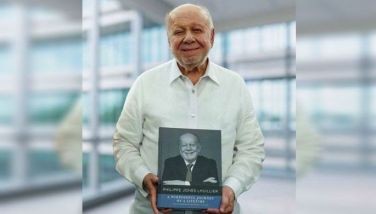The ultimate Human Journey
CEBU, Philippines – Dr. Raymond Moody, MD, the pioneering researcher of the near-death experience, had issued a challenge upon the publication of his book, “Life After Life.” He directed it to the people in the medical profession – for them “to continue researching the marvelous phenomenon.”
Many physicians and researchers accepted that challenge, according to Melvin Morse, MD, who himself was one. “[We] began looking at this amazing spiritual experience in a variety of ways with the multitude of tools and methods available in medicine,” Morse said in his book “Closer to the Light” that came out decades after. Their work, he reported, has spawned a vast new area of research known as near-death studies.
Dr. Moody considers Morse’s work as “the most interesting and arresting” of all the researches that have so far turned out from this brave new world of spiritual studies. He describes Dr. Melvin Morse as “a compassionate pediatrician who was introduced to the near-death experience through the near drowning of one of his young patients, a shy and lovely girl named Katie.” Morse relates in his book that the girl had hovered on the brink of death for three days, in such a deep coma that machines were required to keep her breathing. No one, admits Dr. Morse, expected Katie to live, not even he himself.
But at the end of the third day, she simply awoke as if she had been in a deep sleep. Within 24 hours, the sleeping beauty was up and around, talking to her family, and showing no signs of brain damage. A miracle! No, Dr. Morse discovered the real miracle only a few days later.
The good doctor was curious to know what had caused the girl’s accident. The information was crucial to any physician in order to provide adequate treatment. What Dr. Morse got from little Katie was really quite unusual.
When he asked her what happened in the pool, Katie said, “You mean when I saw the Heavenly Father?” She then went on to describe a marvelous spiritual journey through “heaven.” Dr. Morse was left spellbound.
She told him that she saw “God,” a man of bright light who filled her with his love and kindness. She told of a guardian angel named Elizabeth, who guided her and showed her heaven and even let her return home once to see her family. She also told being offered by God to choose whether she wanted to stay or return to her mother. Katie chose to return, and she was back instantly.
Dr. Morse just couldn’t dismiss Katie’s accounts as merely a dream or as an example of “a few wires getting crossed.” He decided to undertake research to look into the phenomenon scientifically. He was determined to find an answer to humanity’s most nagging question: What happens when we die?
Some of the marvelous discoveries of Dr. Morse and his research team are as follows:
•that a person actually needs to be near death to have a near-death experience. This finding silenced many skeptics who had said that these events were just hallucinations that any seriously ill patient could have. By scientifically comparing the experiences of seriously ill patients with those who had been on the brink of death, the team was able to determine that one does need to cross that threshold before glimpsing the other side.
•that there is an area in the brain where near-death experience occurs. This area, close to the right temporal lobe, is genetically coded for near-death experiences. Dr. Morse and his researchers explored whether this could be the “seat of the soul,” the area that holds the vital essence that makes us what we are.
Dr. Morse has also drawn on the works of the world’s great neuroscientists to support his belief that the same “something” that makes us live (many call it the “soul”) survives bodily death. He cites that even such hard-core scientists as brain surgeons have grappled with that amorphous issue of the human soul. In his book, Dr. Morse inspires the courage it takes to act with compassion, especially among doctors in dealing with their patients.
For instance, where other doctors reject pre-death visions as being caused by fever or fear, Dr. Morse accepts them as help for the dying and uses them to create a soothing environment for patients. From this compassion have risen some intriguing psychic phenomena. “There have been many cases in which children who are near death have been able to summon distant relatives to their bedside. Some of these children have been able to communicate with dead friends and relatives, reporting things that they could never have known without actual contact with the dead.”
Both doctors, Moody and Morse, think that most of their colleagues have been trained to use tranquilizers, not their eyes and ears, to deal with the visions of the dying. It takes wisdom to listen and learn and admit that everything about the human body and mind can’t be taught in medical school. And it takes courage to go against training.
In the course of his quest to look at all aspects of the near-death experience, Dr. Morse painstakingly tracked down adults who had almost died as children. He wanted to examine the long-term effects of their experiences, if it gave life new meaning for them. After listening to dozens of stories, Dr. Morse discovered that these “experiences of light” brighten a person’s life forever – aside from offering the rest of us a glimpse of our ultimate journey.
- Latest


























